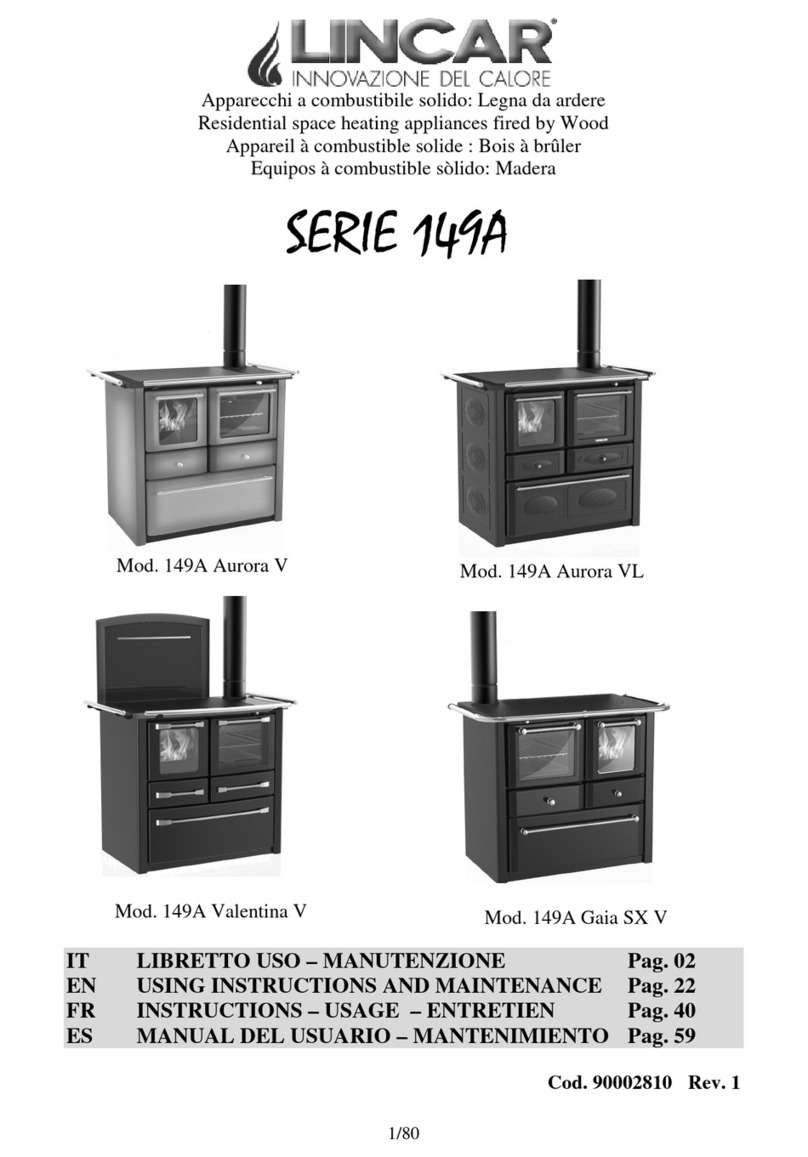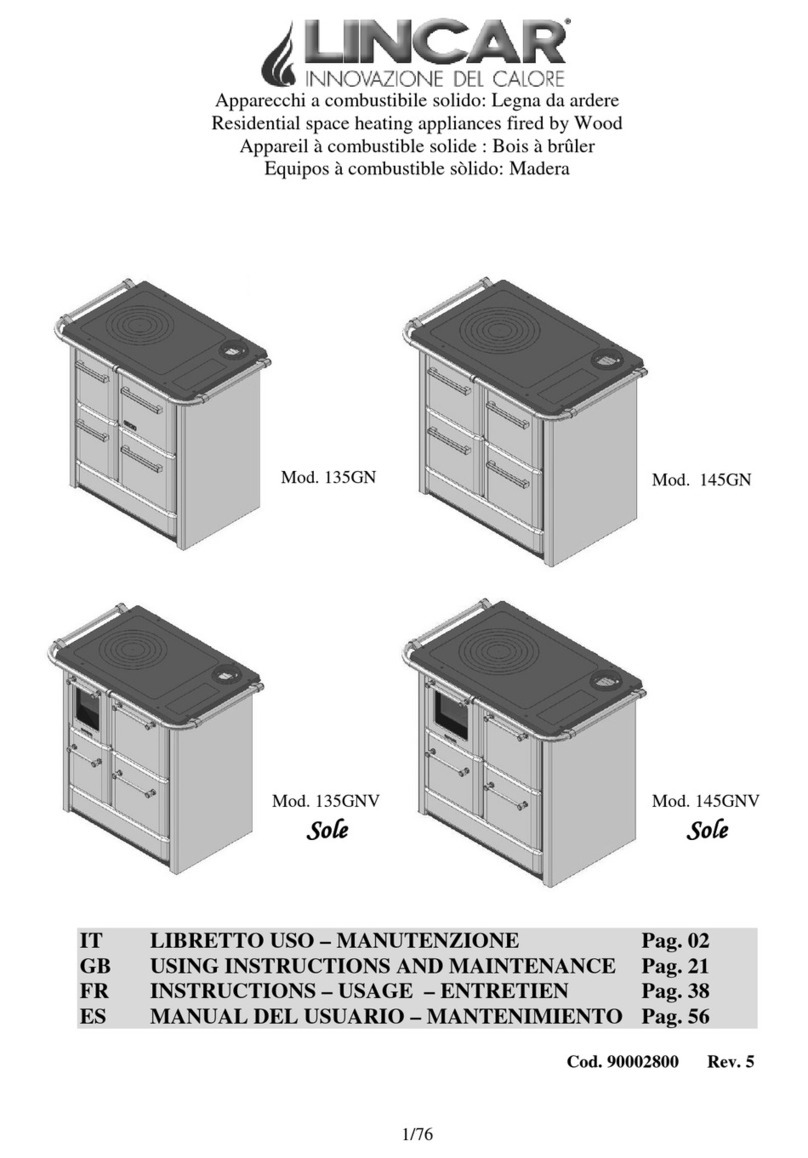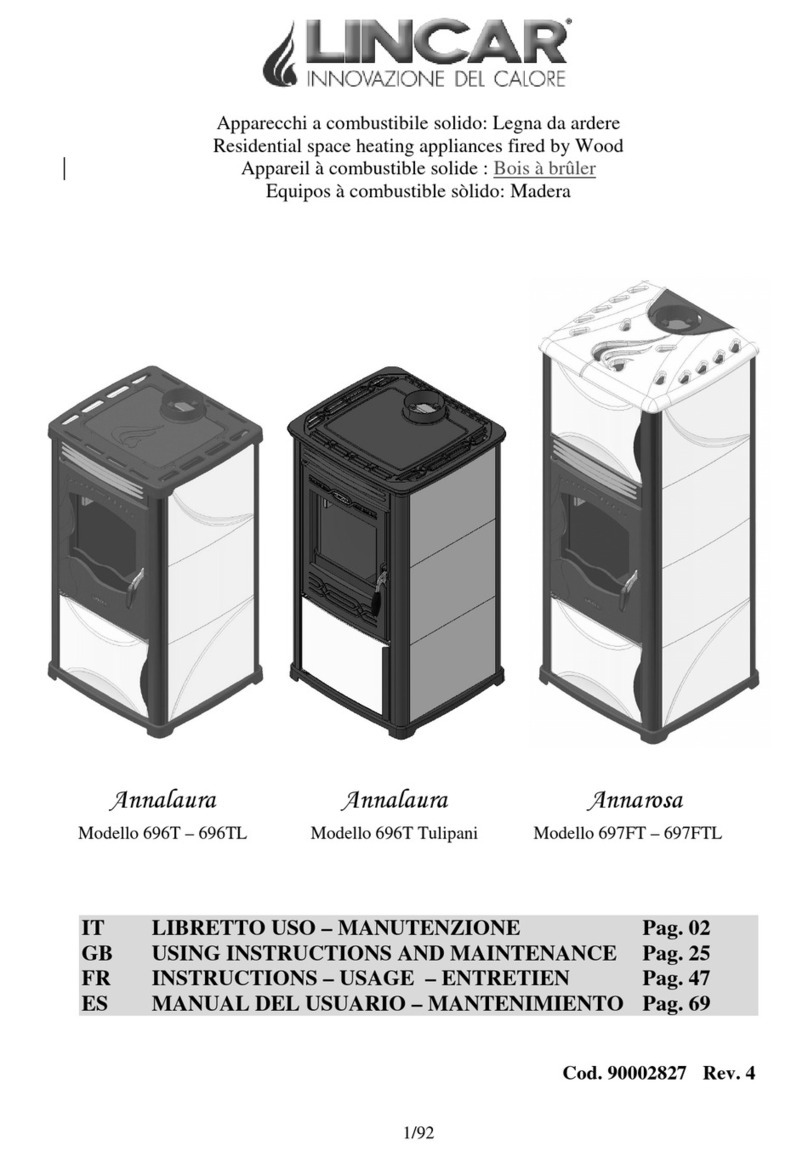
mo d. 135GN-145 GN GB
6/20
CHIMNEYOR FLUE
•The chimney or flue should havethe following characteristics:
−It’ s advisable read, follow and respect what indicated in the paragraphe 1.1
−Good sel of combustion products, impermeable and completely insulated as
normative condiction
−The flue has to be built with raw material suitable for normal mechanical stress,
warmth, action ofcombustion products and its condenses.
−The flow has to be vertical with deflections no hihgher that 45°.
−A right distance from co mbustible or flammable material, insulated with an air
cavity o r ri gh t in su l at o r.
−Internal round section, the square or rectangular section should have round corner
with a ray notless than 20 mm.
−Internal section should be constant, free and indipendent.
−Rectangluar section with sides ration max of 1,5 .
−All manufacturer instruction should be respected concerning the section and the
building characteristic of the chimney or flue. For particular section, deviation of
section or path it will be necessary a complete inspection ofexhaust fumes system.
−It‘ s advisable that the flue should be supplied by a „ chamber „ for solid material and
condenses collection, placed under the flue throat and easy to reach and to open. It
should be also supplied by a completely seal„little door“ for inspection.
−In case of fire of chimney or flue, employ the right system to soffocate the flames
an d c all fo r fi r e fi g h t er .
EQUIPMENT CONNECTION TO CHIMNEYFLUE ANDEXHAUSTCOMBUSTION
PRODUCTS
•It’ s advisable to read, follow and respect what indicated in the paragraphe 1.1
•The flue should receive the exhaust fumes fro man only heating equipment.
•It’s possible to realise an equipment composed from chimney and cooking oven with an
only exhaust fumes point head the chimney, for which the manufactures has to provide
the building characteristics of exhaust fumes channel.
•It’s prohibited to connect in the same flue, the heating equipment and the suction hood.
•It’ s prohibited to connect the exhaust pipe head closed space even if it is in open air.
•The direct exhaust fumes has to be done ahead roof and the exhaust pipe should have the
above characteristics.
CHIMNEYCAP
•The chimney cap should have the following characteristics:
−It’ s advisable to read, follow and respect what indicated in the paragraphe 1.1
−Internal section equivalent with the chimney one.
−Exhaust section exit not lower to the double ofthe chimney internal one.
−Built in a way to avoid rain, snow or external body entrance, to ensure the right exit
ofcombustionproducts with any type ofwind.
−Positioned to guarantee the right fumes dispersion especially ou of re-flux area. This
area has several dimensions and conformations in function of inclination corner of
the covering so it’s necessary to apply the minimal highness as indicated in the
following tables:

































